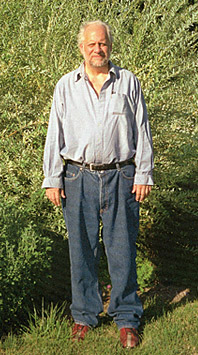Space Genie
My predecessor David Burpee opined toward the end of his life that he regretted only that he would not live to breed the plants of other planets with earth’s. Odd, but then he was a genius born in 1893 who was interviewing a newspaper reporter in the late 60s, still a hot time in the space race, when many folks in the US were confident that, eventually, extraterrestrial life would be found. As I noted last year, ET, or perhaps just a field of intergalactic ferns, may still be found. However, I shall not live to fulfill Mr. Burpee’s dream, much as I might wish. His casual observation expressed a profound understanding of agricultural genetics. Unfortunately, he didn’t live to see the fabulous promise of somatic embryogenesis—whereby substantial time and cost are reduced to improve crop plants—but he would have approved.
Nevertheless, my dreams aren’t as fanciful. I look forward to new cultivars resulting from genetic engineering—not space travel. I’d prefer new varieties that add unknown colors to gardens. Taupes, mauves, salmons (more salmons!), corals and, of course, pinks. A luminous shade of clear pink, with no grey or blue in it, is as mystical as any color you could have. And with new light will come new intensities, both high and low. Perhaps we shall see truly black flowers soon.
Yellows and blues could use help too. There’s already a great range of yellows, with corresponding emotional evocations, from lovingly warm to cheerfully cool. Widen it from blazing hot to almost freezing. Also, blue is a treasure box of subtlety and moodiness. My favorite is midnight blue which combined with lemon yellow is unforgettable. Twenty years ago Harris had a delightful multiflora petunia series, now long gone, called ‘Ribbons’. The dark blue and white striped, with the yellow, were stunning in a confetti-like mixed bed. Picnic time or evening repose, never a dull moment with ‘Ribbons’.
I suppose I’ll settle in for the remainder of my life with my own Forrest Gump box of chocolates here on earth. Other planets just may be more boring than earth. Nice to dream of them and of other suns, other spectra and other eyes, but I won’t oversleep. “You snooze, you lose”, as we say in business.
However, within reach of my lifetime are quantum leaps in gene transfer, which will usher in more of “les choses belles et etrangeres”, greatly to be desired. (However, I remember folks getting so upset in the 90s about Dolly the sheep, and wondering “Why the fuss?”) Plant/animal hybrids, animal/plant hybrids, animal/animal hybrids, plant/plant hybrids. Tiny little trees, 50 foot tall lilies of the valley. A tomato named “Porky”. A cow that grows its own grass. (Indeed, it was only a few hundred years ago that melons were thought to be the source of New World wild sheep.) Some advantages would be clear—plants could move about when they needed, in severe drought, for instance. Also, they would easily avoid inbreeding depression by choosing mates from other forests, since botanical eyes would eventually appear. Here comes Mr. Green Genes, indeed.
On the animal side, we humans could make our own food too, from time to time, or organ-by-organ, photosynthesizing from special areas of our limbs or head, or else via internal metabolizing like roots and bulbs do. Not so much “getting and spending we lay waste our powers”. Maybe Wordsworth was thinking of those little lambs popping out of the exotic melons, instead of daydreaming as his eyes floated across the bucolic green fields.















